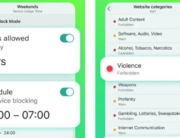Unlock Printing
Childrens Savings Accounts (CSAs) and 529 university cost savings plans both assistance families conserve for the childs university training. While any number of university cost savings is preferable to none, there are many differences that are key both of these forms of university cost cost savings records. These distinctions affect how a account is exposed, how funds develop and exactly how the amount of money may be invested whenever university bills are due.
What’s a CSA?
CSAs are long-lasting savings records put up by urban centers, states and non-profit companies to encourage low-income families to truly save for and sign up for postsecondary training. Some CSAs may be used to pay money for main or school that is secondary costs, the acquisition of a property or company or reference saving for your retirement. CSAs provide incentives such as for instance seed deposits and/or funds that are matching by the sponsoring organization to encourage participation.
One such system is the San Francisco Kindergarten to university (K2C) Program which began last year. Via a partnership with Citibank, the town of san francisco bay area opens and controls a deposit-only, non-interest account with a $50 seed for almost any kindergartener signed up for the citys general public schools. Families ought to add additional money and make extra incentives through the childs main and additional college years.
The necessity for CSAs
The main aim of the CSA would be to show young ones and families the many benefits of saving for college. CSAs also help families develop accountable monetary habits throughout their life. Not merely performs this push low-income families to follow a postsecondary training, but it addittionally contributes to improved prosperity that is socio-economic.
A postsecondary training has become increasingly essential for todays pupils. The middle on Education and also the Workforce at Georgetown University predicts that by 2020, two-thirds of jobs will need education that is postsecondary senior high school. Nevertheless, just over 50 % of moms and dads are saving for college relating to Sallie Maes 2018 report, How America Saves for university.
Municipalities, general public college districts and non-profit businesses have recognized this disconnect and tend to be partnering with banks along with other community companies to establish CSA programs through the entire nation.
Preserving for training causes it to be more available
CSAs seem to foster a belief that college is affordable and accessible whenever cost savings are founded, even though those cost cost cost savings can be modest. Research conducted by the Center for personal developing at Washington University in St. Louis implies that low- and moderate-income kiddies tend to be more than four times as prone to sign up for university whether they have a good tiny number of university cost savings ($1 – $499). Additionally, low- and children that are moderate-income have cost savings of $500 or higher are five times very likely to graduate from university than comparable kiddies with no family savings.
For first-generation university students and low-income families, CSAs present an introduction that is simple the effectiveness of saving for postsecondary training. Incentivizing saving with seed funds and matching efforts make the entire process of saving more manageable additionally the advantages more transparent. In change, students and families produce a more powerful belief they can ensure it is to and by way of a postsecondary training.
CSAs vs 529 plans
When compared with 529 plans, CSAs have actually fewer limitations on what funds are utilized. They even include less risky opportunities provided that they’ve been FDIC-insured cost savings records and so are perhaps maybe not subject to market changes. CSAs offer a local existence through participating banks. They provide qualified savers incentives to encourage saving.
But, not everybody qualifies for a CSA. Many CSAs can be obtained and then families that are low-income. CSAs are often restricted in geographical impact, for instance the residents of a particular town. CSA programs can be found through the nation.
529 plans provide a larger return on the investment combined with the greater complexity and greater threat of loss. Other essential great things about 529 plans consist of better aid that is financial taxation remedy for the cost savings.
Comparison of CSAs and 529 Plans
Childrens Checking Account
Postsecondary training, K-12 costs, purchasing a house or business that is small and saving for your retirement. (changes by CSA)
Postsecondary k-12 and education tuition costs
There are not any federal or state taxation advantages for efforts, profits or withdrawals.
Efforts are post-tax, just like a Roth IRA, and are usually perhaps perhaps maybe not deductible from federal taxes.
Some states give a continuing state tax deduction or income tax credit for contributions to your states 529 plan.
Funds develop on a basis that is tax-deferred.
Qualified distributions are tax-free.
Some CSAs make interest in the cost cost savings plus some usually do not.
529 plans are purchased stock and relationship funds that are mutual and cash market reports. Some 529 plans are dedicated to FDIC-insured CDs.
Many 529 plans provide age-based asset allocations that move the mix of assets from aggressive opportunities as soon as the youngster is young to lower-risk assets because the university years approach.
The 529 plan account shall fluctuate in value in line with the performance of this assets. 529 plans can lose value.
Control, Contribution and Distribution
Some states and municipalities have universal CSAs which are designed for a young child according to a triggering occasion including the application for a delivery certification or enrollment in a school that is public. Many programs need qualified individuals to opt-in.
Many CSAs are beneath the control over the sponsoring company.
There could be limitations as to how much could be added yearly as well as in aggregate.
In many situations, individual efforts would be came back to your beneficiary at a particular age and can be used for almost any function, but motivation funds can be used for qualifying expenses that could differ in line with the CSA.
529 plans are opt-in reports.
The account owner stays in charge of the account. Anyone can donate to a 529 plan account.
There are not any yearly share restrictions, apart from the gift tax exclusion that is annual. 5-year present income tax averaging permits swelling amount efforts become addressed as occurring more than a period that is 5-year.
Each state includes a aggregate that is different restriction of a few hundred thousand bucks. Whenever this restriction is reached, no contributions that are further allowed.
Funds can be withdrawn for almost any explanation. But, if funds can be used for a non-qualifying cost, the wages percentage of the circulation may be at the mercy of taxes in the beneficiarys price and a 10% penalty. Non-qualified distributions may additionally be subject to recapture of state tax benefits.
Qualified distributions enables you to purchase qualified expenses at any university this is certainly qualified to receive federal student help. You can find otherwise no restrictions regarding the located area of the university.
529 plans could be transported among household members in the event that beneficiary isn’t going to utilize the funds.
Eligibility might be limited predicated on in which the grouped household life, family earnings degree in addition to childs age.
Many people are qualified to spend money on a 529 plan. Many states provide their very own plans, but families can spend money on any states 529 plan.






